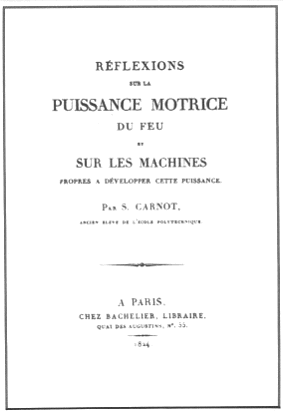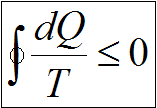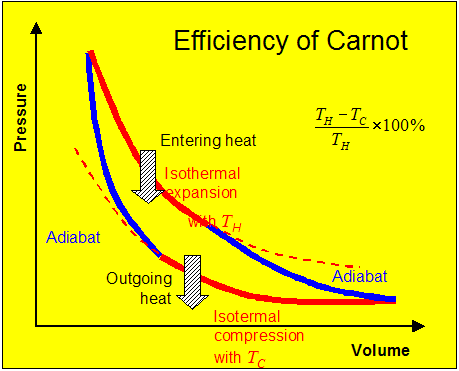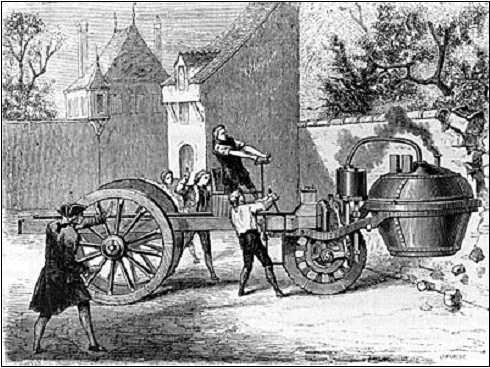

S. -N. Carnot (1976-1832)
Sadi-Nicolas Carnot, son of general died of cholera at 36 years. Its only work Reflexions on the horse-power of fire and the machines suitable to develop this power provided fundations of thermodynamics.

An important conclusion of the analysis of the cycle of Carnot it is that the maximum theoretical yield of the engines with heat is directly related to: efficiency = (TH-TC)/TH
The cycle of Carnot is a idealization, since no process of a real engine is reversible and any physical process implies a small "loss of energy" known as entropy.
For any irreversible process, the efficiency is smaller than that of the cycle of Carnot. That can be associated a smaller heat flow towards the system or an outgoing larger flow of the system. The inevitable result is the inequality of Clausius.


The cycle of Carnot in graphical form was introduced by Emile Clapeyron in 1834.

In 1769, the very first vehicle with autonomous propulsion was a military tractor invented by a French engineer and mechanic, Nicolas Joseph Cugnot (1725 - 1804). Cugnot used a steam engine to propulse its vehicle, built following his instructions in Arsenale of Paris by the mechanic named Brezin. It was used by the French Army to trail artillery at the exorbitant speed of 4 km/h on just 3 wheels.